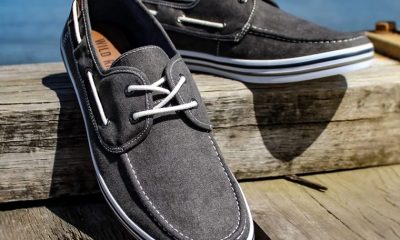Fashion
The Whole Story on the Importance of Uniform Design for Brand Identity
As a result of the expansion of international trade and the globalisation of economies, more and more businesses are realising how important it is to have an influential and consistent brand identity. A well-designed uniform may significantly support a business’s brand identity, exude professionalism, and inspire trust in clients and customers.
Additionally, it can create a cohesive appearance that permits individual expression while communicating the intended message. Learn more about the basics of uniform design to establish a powerful brand identity.
Why Is Uniform Design Important?

Understanding the fundamentals of excellent design in light of the current buzz surrounding “brand identity” is crucial. The consistency of the design elements is one of the most essential—and sometimes disregarded—aspects of design.
Consistency in design across all materials, such as business cards, websites, and signage, fosters a sense of professionalism and coherence. Consumers are more inclined to believe in a brand that presents itself professionally.
Moreover, creating a consistent brand involves more than just using the same font everywhere. When designing customized uniforms for your business, you must consider various elements, such as the overall layout, images, and colour scheme.
Colours
When it comes to identification, colour is often the first thing that brands consider. It is, after all, one of the elements of any most noticeable design. When selecting colours for your brand, it’s crucial to consider the purposes of various hues and how they complement one another. For instance, blue is frequently connected to stability and dependability, whereas green resembles growth and nature.
Once you’ve selected a few colours that complement one another and the personality of your business, don’t stray from them. Use them uniformly in your marketing strategy, including your website, business cards, and signage.
Fonts
Another critical component of uniform design is typography. Your choice of fonts speaks magnitudes about your company. For instance, a sans-serif feels more contemporary and streamlined, but a more conventional serif font exudes refinement.
It’s crucial to assume the text’s legibility and general style when selecting a font. Someone will find it difficult to read a too-complicated font or won’t take it seriously if it is too whimsical. Once you choose a few fonts, stick with them for all your documents. Once more, this will contribute to a sense of unity.
Imagery
Ensure that the imagery used reflects the brand’s message and values accurately. Whether opting for photographs or illustrations, maintain a consistent style throughout all marketing materials.
Consider the relevance of the imagery to the brand’s identity and target audience. For instance, a travel company might use images of landmarks worldwide to evoke a sense of adventure and exploration.
Layout
Maintain a consistent layout across all marketing materials to establish visual coherence while allowing for creative variation. Establish a common thread in layout elements such as colour schemes, typography, or imagery to reinforce brand recognition and identity. Although each piece of marketing material doesn’t need to look identical, strive for a cohesive overall appearance of your customized uniforms that reflects the brand’s identity.
Emphasis
Use emphasis strategically to draw attention to essential elements of the design, such as the company name or call-to-action buttons. Employ colour, typography, or layout techniques to create a visual hierarchy and guide the viewer’s focus. Ensure that emphasis elements align with the brand’s identity and messaging, contributing to a unified and impactful design.
Consistency
Ensure to use consistently the same colours, fonts, and imagery to create a cohesive visual identity that resonates with customers. Consistency in design fosters trust and familiarity, enhancing the brand’s reputation and credibility in the eyes of the audience.
Flexibility
Remain adaptable to changes in the business environment, such as the introduction of new products or expansion into new markets. Be prepared to adjust the design elements while preserving the overall cohesion of the brand identity. Balance consistency with flexibility to accommodate evolving business needs without compromising the integrity of the brand’s visual identity.
How to Design Your Own Work Uniform?

Well-designed custom uniforms can make your staff feel enthusiastic at their workplace and give your company a polished appearance. Thus, it’s critical to finish the task correctly! Here are some tips.
Think About The Kind of Work Your Staff Members Do
The kind of work your employees perform will significantly impact the style of their uniforms. For instance, your employees’ uniforms should be comfortable and convenient if they work in a restaurant. Your employees’ clothes should be practical and protective if they work in a lab or a medical environment like a dental office.
Select the Proper Fabric
Your uniform clothes should be enjoyable, long-lasting, and easily cleaned. Select an appropriate fabric for the working environment and climate that your staff will be experiencing. For instance, breathable, durable, moisture-wicking materials like cotton or polyester would be a clever choice for custom workwear if your personnel operate in a hot, muggy atmosphere.
Keep it Simple
Your work uniforms should have a clean, contemporary style that is both professional and basic. Avoid bold colours and patterns since they can look unprofessional and distracting. Instead, aim for timeless looks and muted hues that complement all skin tones.
Ensure the Uniforms Fit Correctly
Your staff may feel uncomfortable and unattractive in ill-fitting uniforms. Make sure various sizes are available, and urge your staff members to try on the uniforms before donning them. That’ll guarantee that everyone seems their best and is at ease. Furthermore, if the uniforms don’t fit well, they won’t want to wear them!
Think About Adding an Emblem or Company Logo
An embroidered logo completes no work uniform design. Your organisation can project a unified, expert image by emblazoning your clothes, logo, or both. Pick a straightforward, readable design and put it somewhere noticeable on the uniform. A straightforward logo on the side is sufficient when creating custom-printed uniforms.















